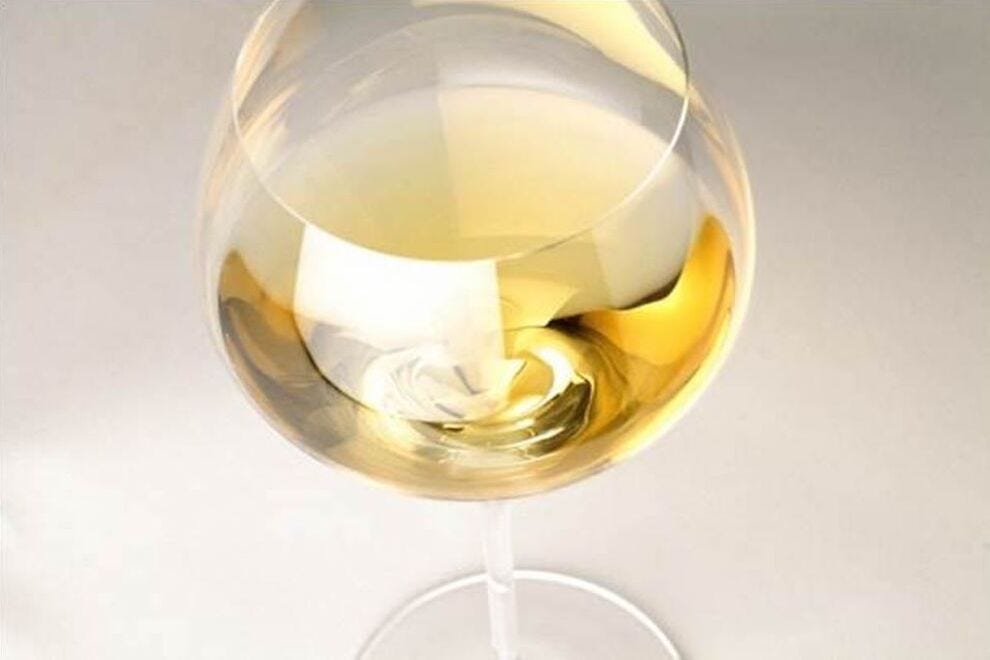Bordeaux’s reputation precedes it. One doesn’t have to necessarily be a “wine geek” to know that the region skirting France’s southwest coast produces some of the world’s finest and priciest wines – an achievement which has led to the assumption that Bordeaux wines are only worth drinking if they cost topdollar.
The wine region sprawls from the city of Bordeaux to flank the Gironde estuary, which spills into the Atlantic Ocean while splitting into the Garonne and Dordogne rivers on the opposite end, with vines comprising the landscapes surrounding both waterways.
In addition to merlot and cabernet blends, Bordeaux is also known for sweet wines made primarily from semillon, sauvignon blanc and muscadelle grapes infected with Botrytis cinerea, a fungus known more familiarly as noble rot. A trifecta of morning mist rising from the Garonne, adequate rainfall and warm afternoons fosters just the right amount of humidity for the fungus to flourish.
Instead of damaging the grapes, noble rot dries the fruit, causing the pulp to concentrate. The painstaking harvest process involves hand-picking the grapes over the course of several weeks, which are then pressed into complex golden wines displaying bright, enveloping flavors like citrus, stone fruit, raisins, honey and candied fruit, as well as spices like saffron and toasted nuts in the long-aged versions.
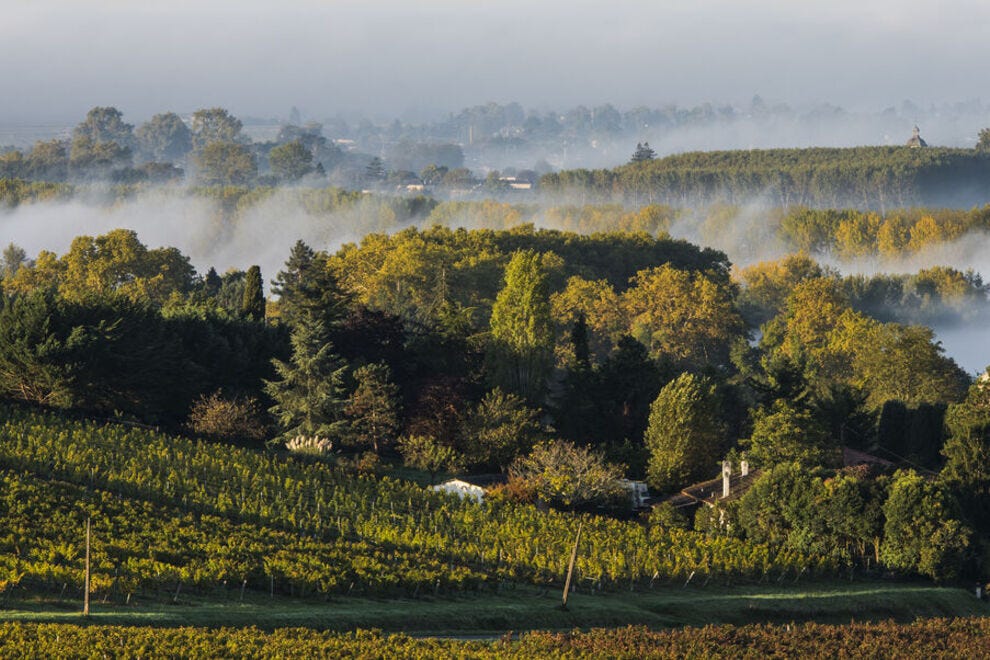 The morning mist rising off the Garonne River — Photo courtesy of Sweet Bordeaux
The morning mist rising off the Garonne River — Photo courtesy of Sweet Bordeaux
A bottle of Sauternes, Bordeaux’s best-known sweet wine appellation, can exceed $500. Consequently, its prestige eclipses the region’s other sweet wines, most notably those from eight nearby appellations situated around 20 miles south of Bordeaux city, along both sides of the Garonne. As members of the Sweet Bordeaux association, 350-plus producers cultivate 1,800 hectares of vines to produce nine million bottles annually, of which 38% are exported.
These wines offer comparable quality at markedly more accessible prices, and when it comes to pairing these wines with food, winemakers agree that the sweet wines are not just for dessert. Unsurprisingly, sweet plus sweet can, at times, yield an all-too-cloying coupling. Yet, there’s seemingly something alchemical in how the sweet wines and savory foods temper and enhance each other.
“Traditionally, these wines are associated with being served alongside foie gras (which we’ve done for centuries), dessert and for special holiday meals, but there are other ways to enjoy them,” says Hugues Hardy, who has overseen Château Faugas, his family’s winery, since 2020. “I really believe our sweet white wines are far more complex [than others]and they can even be more complex than a marvelous red.”
He explains that the sweet wines have the potential to age for up to 40 years and that opened bottles can keep for up two weeks in the refrigerator. He suggests trying the wines at room temperature, which enunciates their complex flavors, and he’s particularly fond of pairing the wine with Asian cuisines like Thai. On the dessert pairing front, Black Forest cake is one of the best ways to go.
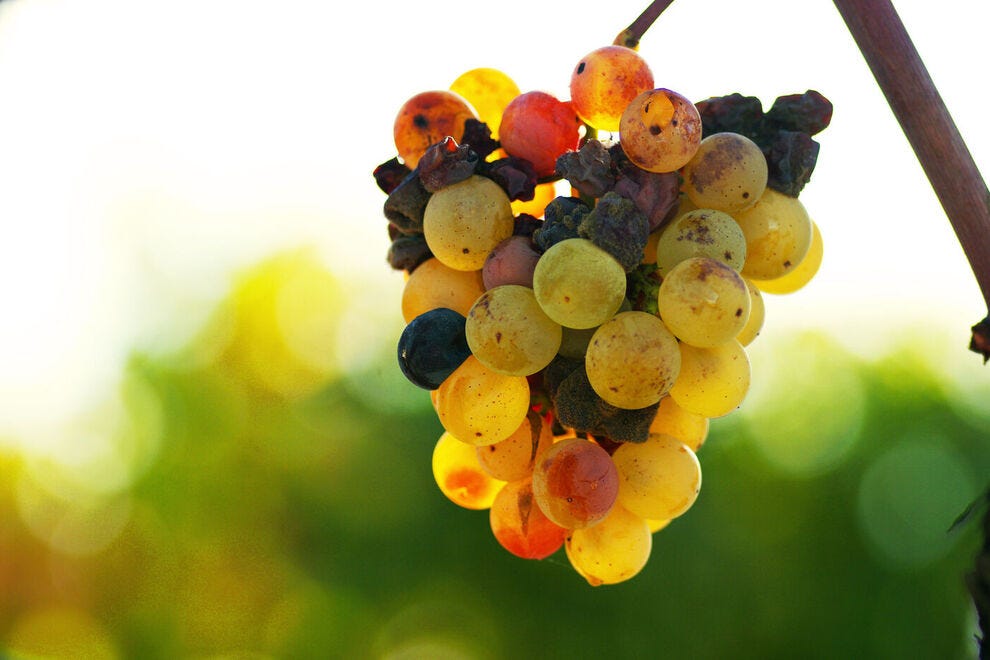 Noble rot starting to settle in on a bunch of grapes — Photo courtesy of Sweet Bordeaux
Noble rot starting to settle in on a bunch of grapes — Photo courtesy of Sweet Bordeaux
In 2006, Youmna and Tony Asseily acquired their retirement project: Château Biac, an estate overlooking the Garonne River that dates back to the 18th century. They entrusted Christine Sourdes, the first woman to own an enology lab in Sauternes, to craft their Secret de Château Biac sweet wine, which New York’s Eleven Madison Park and the Musket Room offer by the glass.
At home, the Asseilys will uncork a bottle alongside meals inspired by their native Lebanon, Ms. Asseily’s smoked haddock soufflé with curry sauce and, during autumn and winter, butternut squash soup with ginger and apple. If taking the sweet route, Ms. Asseily suggests pairing the wine with key lime pie, orange tart or crêpes suzette.
Sandrine Darriet-Froléon, managing director of Vignobles Darriet, which produces sweet wines under the Château Dauphiné-Rondillon label, believes in pairing the wines with umami-rich dishes, such as those that characterize Japanese cuisine.
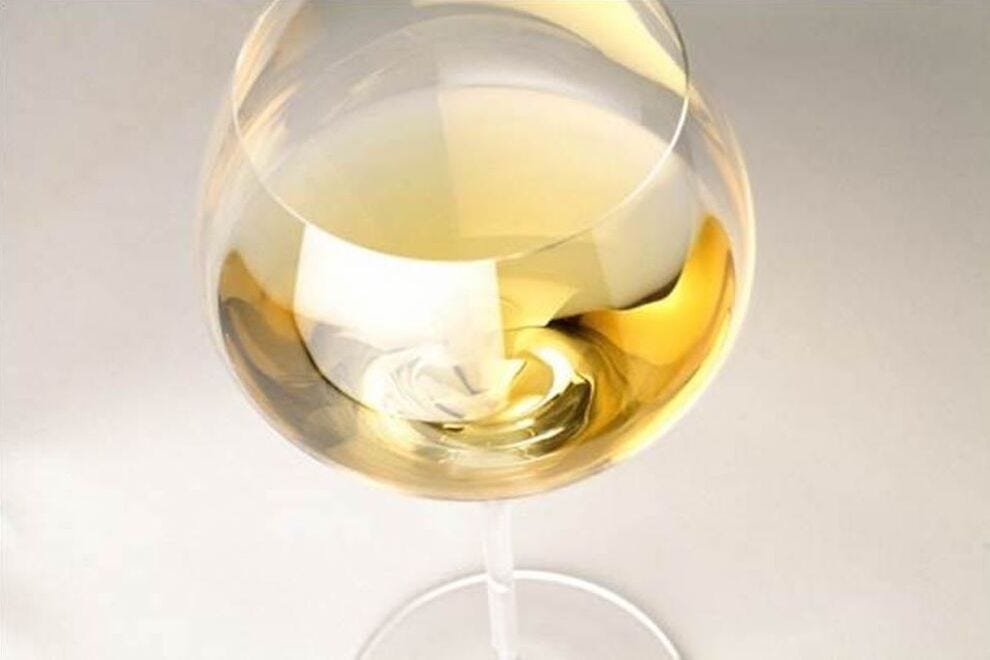 The sweet golden wine of Bordeaux — Photo courtesy of Sweet Bordeaux
The sweet golden wine of Bordeaux — Photo courtesy of Sweet Bordeaux
Sweet wine and oysters are a classic pairing, and while cheese might seem like an obvious one, there are some factors to keep in mind, “With all the sugar, it’s not good to pair the wine with cheese that’s too creamy,” says Jonathan Ducourt of Vignobles Ducourt, a winemaking family since 1858. Blue and goat cheeses are always a win, as is Mimolette, a hard, bright-orange cow milk cheese, and Époisses, a soft, aromatic cow milk cheese.
Additionally, a new generation of young winemakers, including Hardy mentioned above, are revitalizing the territory and wines. Nea Berglund has overseen Château Carsin, which her family de ella acquired in 1990, since 2015 and has since converted the estate to fully organic. Pauline Lapierre’s family has owned Château Haut-Rian for over 30 years, and in 2018, she purchased their neighbor’s organic land plot, which she uses to make her own wine under the estate’s label. In addition, she and her family de ella aim to have a fully organic vineyard by 2024.
Arthur Fournier’s family acquired the abandoned Château de Birot in 1989. They implemented a 10-year renovation and replanted the vines, and he’s been the general manager since 2014. Charles and Clémence Medeville are the eighth generation at Château Fayau, Mathieu Delong is the fifth generation to manage Château Majoureau, and Guillaume Gonfrier is the third generation of Vignobles Gonfrier, one of the region’s most prolific wine-producing families.
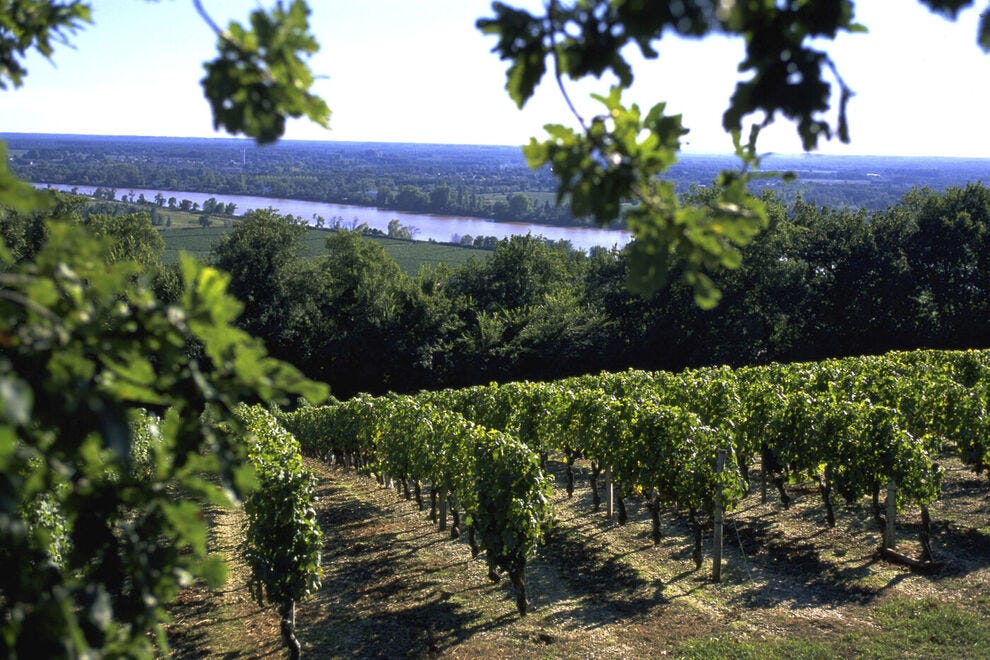 Vines against the backdrop of the Garonne River — Photo courtesy of Sweet Bordeaux
Vines against the backdrop of the Garonne River — Photo courtesy of Sweet Bordeaux
Recently, another trend from the days of yore has reemerged: sweet wine cocktails. “They were popular in the 1920s and the 1970s, and they’re making a comeback now,” says Hardy. He suggests pouring the wine over crushed ice with some lime, while Berglund, who also makes organic Cadillac tonic, sells Sweet Bordeaux and Tonic kits.
Other sweet wine producers of note include Château Laurette in Sainte-Croix-du-Mont, Château de Cérons in Cérons, Château Lamothe de Haux in Cadillac, which produces sweet wine under the Château Manos label, and Château du Cros in Loupiac, owned by Catherine Boyer, one of the region’s most dynamic women winemakers.
“Up until the last century, people used to consume these wines at every meal,” concludes Hardy. “We’re starting to show the world a different side of Bordeaux. The wines are not expensive, and they’re a part of our future.” And Sweet Bordeaux’s future looks golden indeed.
.

